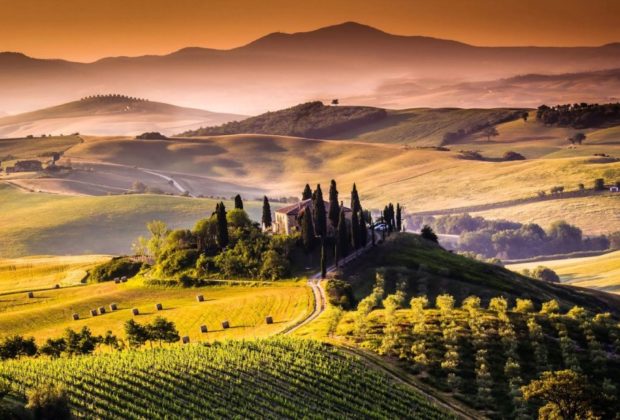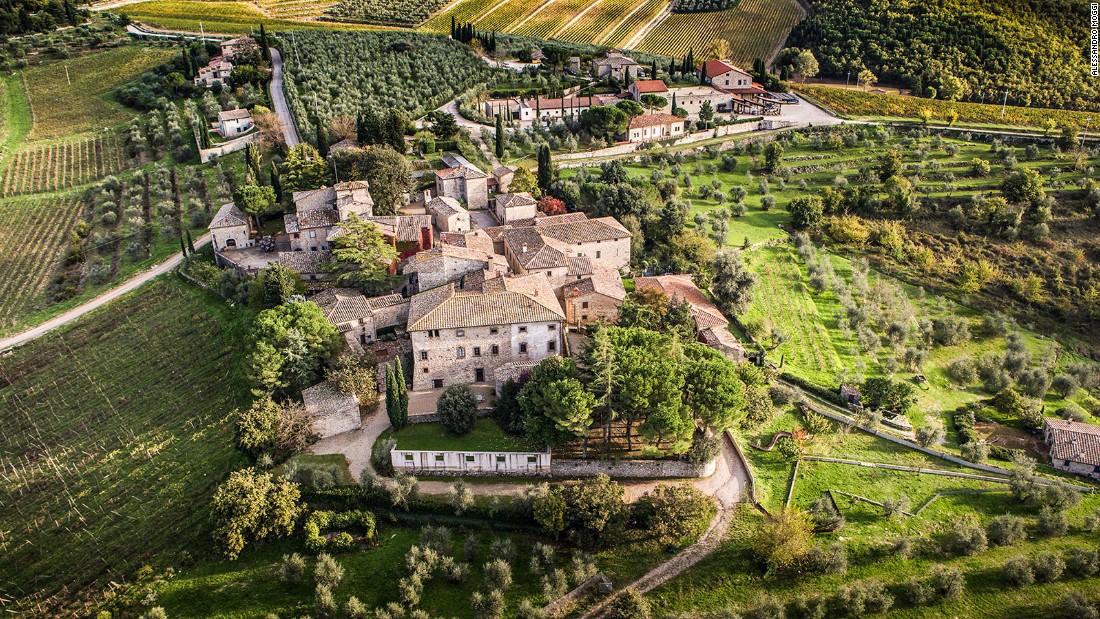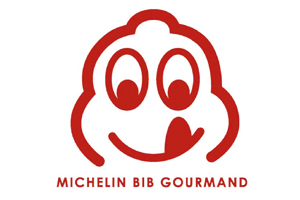
Tuscany’s finest wineries
From Florence to Siena and the greened hills of Montalcino, then back to the Mediterranean Sea, Tuscany is the perfect destination for all the Italian gourmet lovers. Whether you are a food enthusiast or looking for a nice, relaxed winery to please your senses, here are some recommendations you might want to consider for your next trip.
Well hidden in the midst of infinite vineyards and Renaissance churches, you can always find little family wineries, which organize private tastings. However, in order to understand more about Tuscan wine, your first stop should be the headquarters of Chianti Classico Consortium, in Radda. In 2016, they celebrated 300 years of history, since 24th September 1716, when Grand Duke Cosimo III de’ Medici decided to issue a notice to define the boundaries of some particularly well-suited areas to the production of fine quality wines, for the first time in history.[1] There you can enjoy music evenings with traditional pasta meals or chefs’ dinners and tastings of famous Gallo Nero wine.
According to Decanter[2], these are the top 5 Tuscan wineries to visit:
The castle here was built 1,000 years ago to guard Florence, and great artists such as Donatello used to purchase wine from the estate. Still owned by the Frescobaldi family (one of the rivals of the Medicis back in time), the castle was destroyed in 1944, then partially rebuilt but you can still view the original cellar at the Renaissance villa. A visit here includes a tour of the monumental cellars where the Chianti Rù fina (the higher appellation in the Chianti area) is aged. Other highlights include the tasting room in an old kitchen. Here, the old vintages start from 1864 but Marchese Lamberto Frescobaldi is very fond of the 1960, 1974 or 1981.[3]

Antinori Chianti Classico
This old and spectacular winery is just 20km away from Florence, set among olive groves and geometrically aligned vineyards. The Antinori family has been in the wine business since 1385, and are renowned for an active and prolific wine empire, which boasts two of Italy’s top wines – Solaia and Tignanello. Recently open, the new winery has more than 600 years of winemaking on display in its wine museum, book shop, art collection, wine bar and tasting rooms.

Castello di Ama
The beautiful 12th century castle was brought back to life in the last decades and now it has one of the most important wine-related contemporary art installations on site, as well as fantastic fine wines such as the Haiku Chianti Classico. Also, Castello di Ama has a state-of-the-art olive press which allows the Pallantis to bottle one of the countryside’s best oils.

Salcheto
Salcheto became the first self-sufficient winery in Europe due to its 2011 harvest and most of the energy they need now comes from renewable sources and recycled winery materials. There are water reclamation practices, solar panels providing energy to the cellar, and the wine tanks operate off the excess CO2 that is produced during fermentation. Salcheto is also certified organic, and is Europe’s first winery certified to use the green carbon footprint sticker on bottles, producing top-notch wines.

Sassicaia – Tenuta San Guido
Placed just 3 km away from the coast, in Tenuta San Guido, Italy’s first vine cuttings of Cabernet Sauvignon and Cabernet Franc were planted by Marchesi Mario Incisa della Rocchetta in 1944. He intended to produce his own house wine. Three decades later, in 1978, a 1972 Sassicaia came top in a Cabernet tasting run by Decanter – the best of 33 wines from 11 countries. The wine was then just a table wine, with no relation to any famous appellation. However, the term Super Tuscan was born to describe this masterpiece, and later emulators. This was the beginning of one of the wine revolutions of the 20th century.










